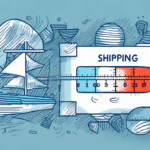How UPS Determines Box Pricing
UPS calculates box pricing based on several key factors to ensure accurate and fair billing for shipping services. Understanding these factors can help businesses and individuals optimize their shipping strategies and manage costs effectively.
Size and Weight
The primary determinants of UPS box prices are the size and weight of the package. UPS employs a dimensional weight pricing model, which considers the package's volume in relation to its actual weight. This means that larger, lighter packages may cost more than smaller, heavier ones. For example, a box measuring 12”x12”x12” may incur higher fees than a compact, denser package.
Destination and Shipping Speed
The destination of the package significantly impacts the cost. Shipping domestically within the United States is generally more affordable than international shipping. Additionally, the chosen shipping speed—such as ground, expedited, or overnight—affects pricing. Expedited services offer faster delivery times at a higher cost.
Package Type and Handling Requirements
Specialized items, such as fragile or hazardous materials, require unique packaging and handling, which can increase costs. UPS provides various box types tailored for specific items, each with its own pricing structure. For instance, electronics or artwork may necessitate specialized boxes to ensure safe transit.
Volume and Customer Status
Businesses that ship frequently or in high volumes may qualify for discounted rates. UPS offers tiered pricing for high-volume shippers, enabling them to benefit from lower costs per shipment. Additionally, customers can utilize UPS shipping software to manage and optimize their shipping processes.
Key Factors Influencing UPS Box Prices
Dimensional Weight
Dimensional weight is a critical component in UPS pricing. It is calculated by multiplying the length, width, and height of the package and dividing by a specific divisor set by UPS. For example, if the dimensions of a package are 20”x15”x10”, the dimensional weight would be calculated as (20x15x10)/139 ≈ 21.6 lbs. If the dimensional weight exceeds the actual weight, UPS charges based on the dimensional weight.
Fuel Surcharges and Additional Fees
Fuel prices fluctuate, and UPS adjusts its fuel surcharges accordingly. Additionally, packages requiring special handling or traveling to remote locations may incur extra fees. It's essential to factor in these surcharges when estimating shipping costs.
Distance and Shipping Zones
The distance between the shipping origin and destination affects the cost. UPS divides regions into shipping zones, and the further the package travels across zones, the higher the cost. For instance, shipping from New York to California spans multiple zones, resulting in higher fees compared to shipping within the same state.
Delivery Service Options
UPS offers various delivery service options, including standard ground shipping, 2nd day air, and next-day air. Each service level provides different delivery times and costs, allowing customers to choose based on urgency and budget.
Comparing UPS Box Prices with Other Shipping Options
USPS
The United States Postal Service (USPS) is a competitive alternative to UPS, especially for smaller or less urgent packages. USPS offers flat-rate boxes, which can be cost-effective for heavy items, regardless of distance. Additionally, services like Priority Mail provide reliable delivery at competitive rates.
FedEx
FedEx is known for its extensive range of shipping services, including same-day and next-day delivery options. FedEx tends to be more expensive than UPS for similar services but may offer better rates for particular shipping needs, such as international expedited shipping.
DHL
DHL specializes in international shipping, offering extensive global coverage and competitive rates for overseas deliveries. While DHL is an excellent choice for international shipments, its domestic services in the U.S. are not as extensive as UPS or FedEx.
Service Level and Reliability
When comparing shipping options, it's crucial to consider not just the price but also the level of service and reliability. UPS is renowned for its reliable tracking and delivery services, making it a preferred choice for businesses requiring dependable shipping solutions.
Types of UPS Boxes Available
Standard UPS Boxes
UPS provides a variety of standard box sizes to accommodate different shipping needs. These include small, medium, and large boxes designed for general purposes. Standard boxes offer a reliable and cost-effective solution for most shipping requirements.
Specialty Boxes
For shipping sensitive or high-value items, UPS offers specialty boxes tailored to protect specific types of goods. Examples include:
- Electronics Boxes: Designed with additional padding and structural integrity to safeguard electronic devices.
- Artwork Boxes: Custom-sized boxes with reinforced corners for shipping artwork and delicate items.
- Insulated Boxes: Equipped with thermal padding to maintain temperature-sensitive items during transit.
Eco-Friendly Boxes
UPS is committed to sustainability and offers eco-friendly boxes made from recycled materials. These boxes help businesses reduce their carbon footprint while maintaining reliable shipping standards.
Custom Boxes
For businesses with unique shipping needs, UPS provides custom box solutions. Custom boxes can be designed to fit specific dimensions or branding requirements, enhancing brand recognition and ensuring secure packaging for specialized products.
Tips for Saving Money on UPS Shipping
Optimize Package Size and Weight
Using the smallest possible box that fits your items can significantly reduce shipping costs by minimizing dimensional weight. Avoid oversized packaging by accurately measuring and selecting appropriate box sizes.
Choose Ground Shipping
Opting for ground shipping instead of expedited services can lead to substantial savings. Ground shipping is generally less expensive and suitable for non-urgent deliveries.
Utilize UPS Discounts and Promotions
Take advantage of UPS discounts and promotional offers, such as free shipping on certain orders or discounted rates during peak seasons. Enrolling in UPS programs like shipping software can also provide access to lower rates and streamlined shipping processes.
Alternative Packaging Options
Consider using your own packaging materials instead of UPS-branded boxes. Sturdy cardboard boxes or padded envelopes can be more cost-effective and versatile for various shipping needs, provided they meet UPS packaging guidelines.
Consolidate Shipments
Combine multiple items into a single shipment when possible. Consolidating shipments reduces the number of packages and can lead to lower overall shipping costs.
Estimating UPS Box Prices and Avoiding Common Mistakes
Estimating Shipping Costs
Accurately estimating UPS box prices involves using UPS's shipping calculator or integrated shipping software. By entering package dimensions, weight, destination, and desired shipping speed, you can obtain a reliable cost estimate. Additionally, comparing different service options within UPS can help identify the most cost-effective solution for your needs.
Common Mistakes to Avoid
- Inaccurate Measurements: Failing to precisely measure package dimensions and weight can lead to incorrect pricing and unexpected costs. Always double-check measurements before shipping.
- Ignoring Dimensional Weight: Overlooking dimensional weight calculations can result in higher shipping fees. Ensure you account for both actual and dimensional weight when estimating costs.
- Neglecting Additional Fees: Additional charges such as fuel surcharges, insurance, and special handling fees can add to the total cost. Be aware of these potential extra fees when planning your shipment.
- Poor Packaging: Using inadequate packaging can result in damaged goods, leading to additional costs and customer dissatisfaction. Invest in proper packaging materials to protect your items during transit.
- Not Comparing Shipping Options: Relying solely on UPS without comparing other shipping providers may cause you to miss out on more competitive rates. Evaluate multiple shipping options to ensure you’re getting the best deal.
Best Practices for Accurate Estimation
To achieve accurate shipping cost estimations, follow these best practices:
- Measure all dimensions (length, width, height) precisely.
- Weigh the package accurately using a reliable scale.
- Consider the nature of the items being shipped to determine if special handling is required.
- Review the UPS service options and choose the one that best fits your budget and delivery timeline.
- Regularly update your knowledge of UPS pricing structures and policies to stay informed about any changes.
By adhering to these guidelines, you can avoid common pitfalls and ensure a smooth and cost-effective shipping experience with UPS.




















